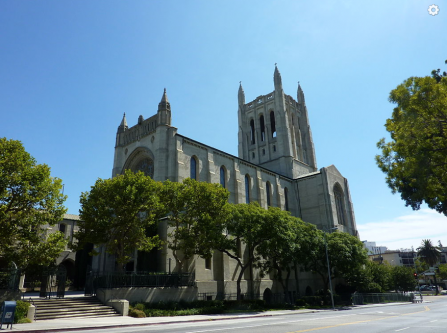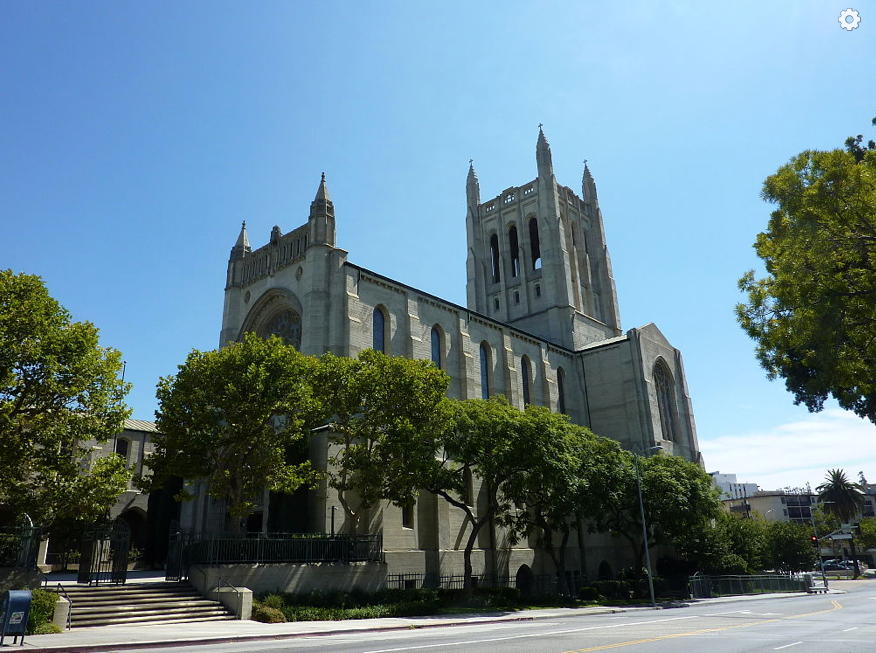 United States Bach: Musica Angelica Baroque Orchestra, Orchester Wiener Akademie, Musica Angelica Consort / Martin Haselböck (conductor), First Congregational Church, Los Angeles, 14.4.2019. (DD)
United States Bach: Musica Angelica Baroque Orchestra, Orchester Wiener Akademie, Musica Angelica Consort / Martin Haselböck (conductor), First Congregational Church, Los Angeles, 14.4.2019. (DD)

Bach – St. Matthew Passion
Soloists: Teresa Wakim, Theodora Raftis, Reginald Mobley, Alois Mühlbacher, Zachary Wilder, Pablo Corá, John Taylor Ward, Christoph Filler
Where does Bach’s St. Matthew Passion fit in the world of sacred music? It is virtually always ranked in the top five masterworks of the literature, often compared and contrasted with Bach’s other undeniably great liturgical composition, the Mass in B minor. Indeed, there are many who argue that these two works jointly rule the roost, along with Beethoven’s last symphony and Handel’s famously popular oratorio. Mind you, the list of monumental masterpieces does not stop there, but few would deny these definitive compositions their lofty station.
Any professional performance of this music should be heard by the serious music lover, but a St. Matthew Passion, especially one with Martin Haselböck, the Vienna Academy Orchestra and both the consort and baroque orchestra of Musica Angelica, really ought to be required attendance. I expected a performance that balanced dramatic and sacred qualities, featured immaculate solos and outstanding ensemble work, and integrated elements both sacred and profane, as one finds in the original Biblical text. I was not disappointed.
The experience of St. Matthew Passion is one that straddles the emotional, intellectual and artistic worlds. From the plaintive opening chorale through Bethany, Judas’s betrayal, the Last Supper, Gethsemane, the arrest and trial, Golgotha and, finally, the crucifixion, death and entombment, Bach’s music roves from the dramatic to the tragic, encapsulating (if almost three hours can be thought of as a capsule) a narrative often called ‘the greatest story ever told’.
The players performed at the highest level. Music director Martin Haselböck is a distinguished early music conductor, and he approaches Bach in a manner that is solemn when necessary but always completely human. Subjects both sacred and profane mingle and mix in the most ingenious ways.
This is a long and complicated narrative filled with grand double-choruses, dramatic recitatives and intimate arias, pensive poems and quasi-madrigals, written by Picander, Bach’s best-known librettist. The individual vocal soloists are central to the dramatic core of the Bach score. Sopranos Teresa Wakim and Theodora Raftis could be sweetly lithe when desired and deadly serious when required; countertenor Reginald Mobley demonstrated his great range in a demanding role, as did Alois Mühlbacher, who would be as comfortable with Schubert.
Still, the starring roles are those of the Evangelist, sung by tenor Zachary Wilder, and Jesus, sung by bass John Taylor Ward. Together, they were both the vocal anchors and central dramatic figures here, and their contrasting stage personalities and voices reenacted the darkest elements of the drama without laying it on too thickly: tone and temperament fit perfectly.
I would be remiss (nay, doubly-remiss!) were I not to mention the fantastic double orchestra of director Haselböck: Orchester Wiener Akademie and the Musica Angelica Baroque Orchestra of Southern California. Haselböck was the original artistic director of Orchester Weiner, and has assumed the title of music director of Musica Angelica after the passing of Angelica’s founding members, Michael Eagan and Mark Chatfield. The pairing of these two ensembles was an Easter miracle to my ears, and it bodes well for period-instrument music in Southern California.
The performance took place in the nave of the First Congregational Church of Los Angeles, a remarkable structure built in English Gothic Revival style. While the church was founded in 1867, shortly after the American Civil War, the present church was constructed in the 1930s, and was designated in 2002 as a Historic/Cultural Monument by the Los Angeles Cultural Heritage Commission. For regular patrons of venues like the Walt Disney Concert Hall, this space might be thought of as a quaint throwback to an earlier time. But the intimacy of the place, the long pews beside the central passage, the nave which leads eyes and ears towards the seated orchestra and standing vocalists in the apse, a space for both soloists and chorus fronted by instrumentalists, and a conductor like Haselböck made this a beautiful venue, with an abundance of ceremonial pomp that confers a kind of liturgical legitimacy to the devotional aspect. Bach would have been pleased.
Douglas Dutton
